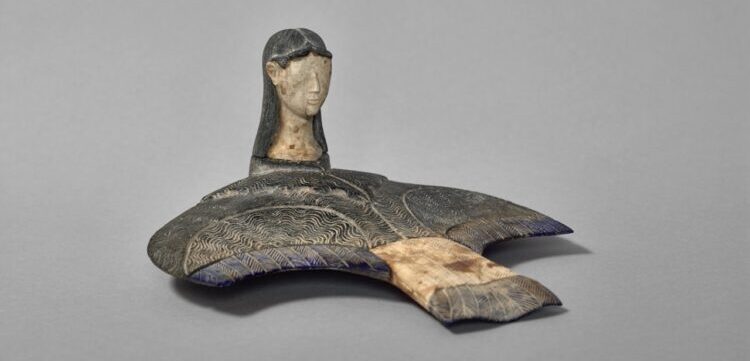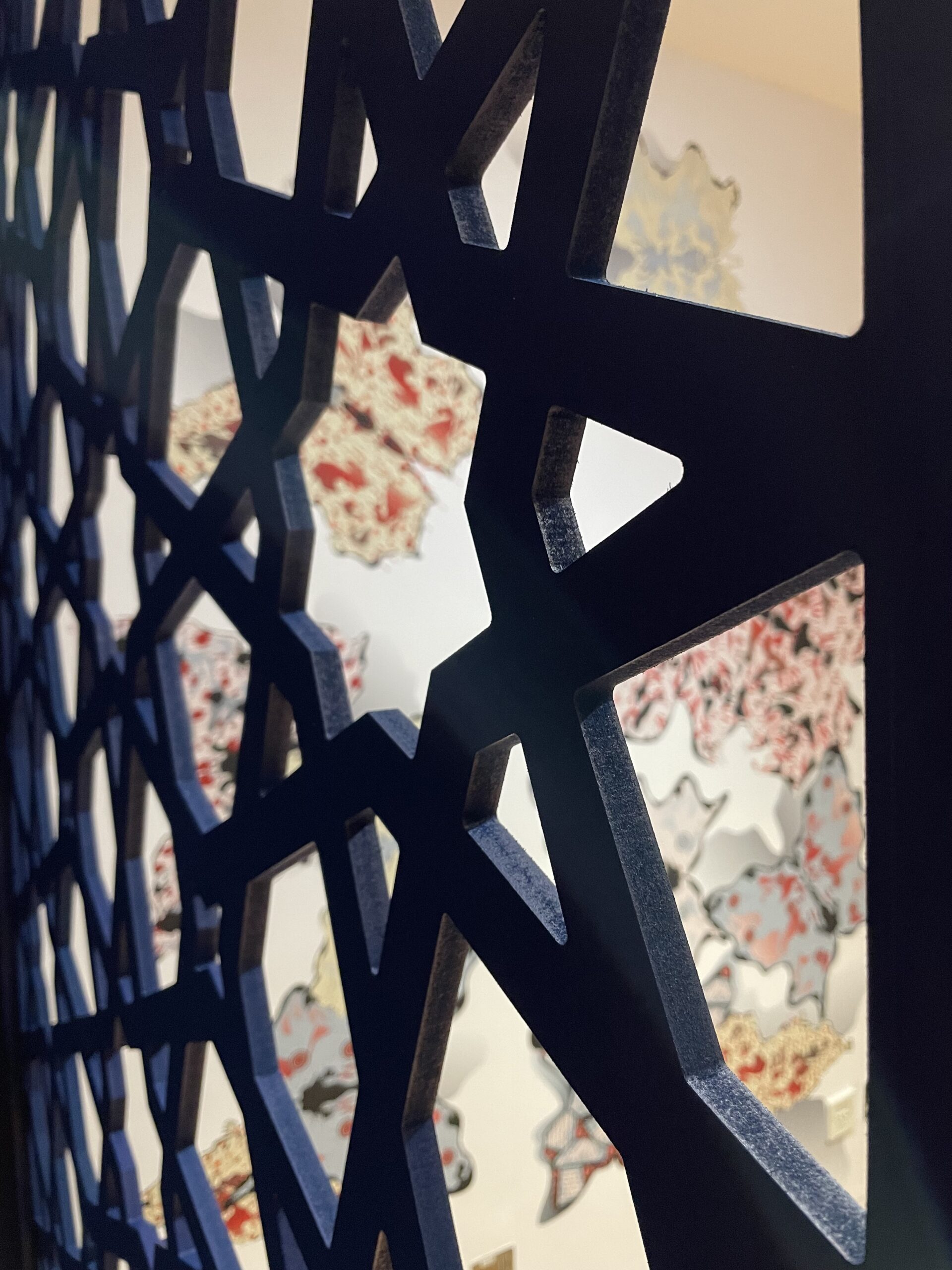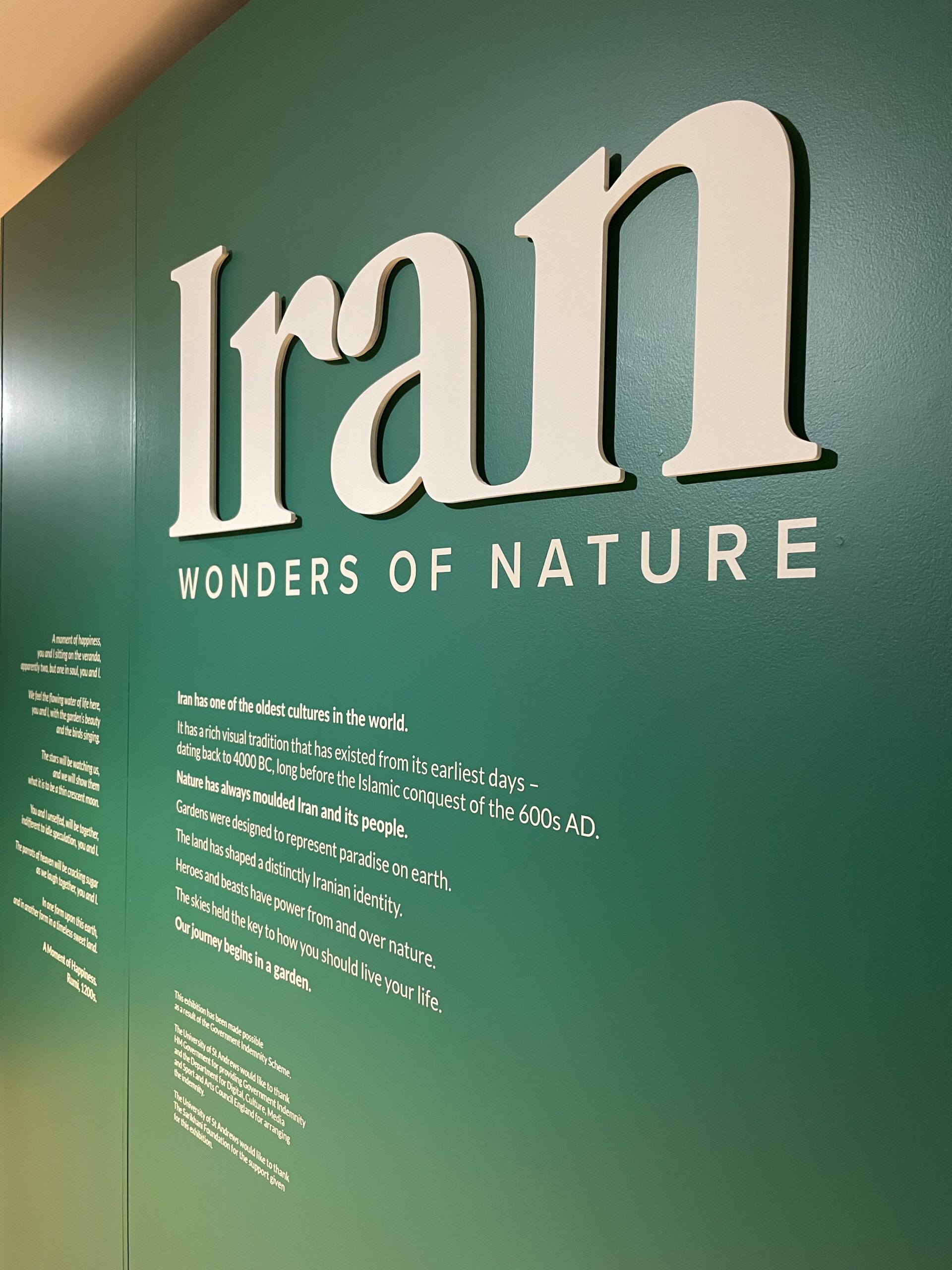New St Andrews exhibition explores one of the world’s oldest cultures

A snake man, a bird goddess and a wall of butterflies are among the objects on display in Scotland for the very first time in a new exhibition exploring one of the world’s oldest cultures.
Iran: Wonders of Nature, which opens at the University of St Andrews Wardlaw Museum on Sunday 28 January, looks at how the environment has moulded the Iranian identity through 5000 years.
Among the items that reveal nature’s influence in ancient times is an intriguing statue of a snake-like man with scaled skin, made between 3000 and 2000 BC and on loan from the Sarikhani Collection. The sculpture, which will be on public display in the UK for the first time, is thought to represent a mythical figure with control over the waters of the earth.
 The exhibition examines how nature has always been important to Iranians, from ancient beliefs, through the Zoroastrian faith and into Islam. Rich visual traditions, poetry, music and scent explore contemplation, the cultivation of gardens, the examination of the cosmos and the shape of the land and how they have impacted Iranians during the culture’s full sweep of history.
The exhibition examines how nature has always been important to Iranians, from ancient beliefs, through the Zoroastrian faith and into Islam. Rich visual traditions, poetry, music and scent explore contemplation, the cultivation of gardens, the examination of the cosmos and the shape of the land and how they have impacted Iranians during the culture’s full sweep of history.
The theme is brought into the twenty-first century with the most recent of the works on display, which uses the beauty of nature to subtly comment on the brutality of the current Iranian regime.
The Time of Butterflies, first created in 2011 and made in a new form especially for this exhibition, takes its inspiration from the assassination of artist Parastou Forouhar’s parents by the Iranian intelligence services in 1998. The artwork covers the wall in colourful butterflies, in memory of the artist’s mother, Parvaneh, whose name means ‘butterfly’.
The exhibition marks the first time that a selection of treasures from the renowned Sarikhani Collection will be displayed in Scotland. The collection includes a wide range of objects spanning the nearly five millennia from 3000 BC to the 1700s.
The creators of the exhibition, which has been generously supported by The Sarikhani Foundation, hope that it will stimulate visitors to participate in the Iranian practice of contemplating art and nature to better understand our place in the world.
Dr Yusen Yu, from the School of Art History, said: “Among the many ways to tell the story of Iranian art, this exhibition shows how art and nature are intertwined. Nothing epitomises this theme better than a Persian garden, where poetry is enjoyed accompanied by music and wine amidst trees and streams.
“The exhibition invites the audience to explore the garden and beyond, from the land, the sea, to the sky. It is about beauty, pleasure, excitement, curiosity and, above all, an Iranian way of living.”
One of the unique items revealing the beauty of Iranian gardens and their close relationship with poetry is a three-metre long scroll on which a poem, Orchard by the medieval poet Saadi, has been written. The scroll, created in Iran for King George III, is written in the form of intricate leaves using a brush of only a single hair.
Professor Ali Ansari, from the School of History, said: “Pairidaeza – the famed walled garden of the ancient Persians, from which we derive the word Paradise, symbolised mankind’s intimate relationship and harmony with nature. This timely exhibition, with the generous help of the Sarikhani Collection, showcases the importance of nature in Iranian history, culture and literature and the crucial role we play as guardians of this precious natural inheritance.”
A panel of Iranians in Scotland has advised the development of the content. The exhibition is accompanied by a full programme of events, including a traditional celebration of the Iranian new year festival of Nowruz, an In Conversation event with Professor Ali Ansari, and a family activity day exploring the heroes and beasts of Iranian mythology.
Iran: Wonders of Nature will be on display at the Wardlaw Museum from Sunday 28 January until Sunday 12 May 2024. Entry is free. Full details can be found on the museum’s website.
Issued by the University of St Andrews Communications Office.
Images courtesy of Wardlaw Museum.